Scorching swings and slides
View Sequence overviewStudents will:
- identify objects that are not a source of heat.
- ask questions and make predictions about the movement of heat.
- investigate to find the answer to questions about the movement of heat.
- explain the movement of heat between an object that does not produce its own heat and a heat source.
Students will represent their understanding as they:
- create labelled diagrams which include arrows to show the movement of heat.
- use questions to agree and disagree with teams’ claims.
In this lesson, assessment is formative.
Feedback might focus on:
- Do students’ labelled diagrams include the required features? A quality matrix can be used to guide the feedback process.
- Pay particular attention to students who may have demonstrated alternative conceptions in Lesson 1, and any students still demonstrating alternative conceptions.
- Do students use evidence to support their claims? Do they use evidence to respond to questions from other students/teams?
- What do students' labelled diagrams tell you about their developing understanding of the movement of heat? Are arrows accurately showing the direction of the movement of heat?
Whole class
Class science journal (hard-copy or digital)
Metal spoon
Wooden spoon
A heat source such as a wheat heat bag, a hot pack, or a hot water bottle and warm water to fill it
Demonstration copy of Spoon temperature investigation Resource sheet (or create your own)
Each group
3 metal spoons
3 wooden spoons
Note: If you are unable to source enough spoons for each group to have 3 of each kind, plan to allow time between the testing of each heat source. By allowing time for the spoons to return to ambient temperature before the next heat source is tested, the test will remain fair and the data valid.
Each student
Individual science journal (hard-copy or digital)
Spoon temperature investigation Resource sheet (or create their own)
Safety notes
Hot water: Any hot water used in a classroom should be at or below 43°C. Any hot water bottle/heat pack etc. should never be opened or pierced with a sharp object. They should always be covered with a layer of insulating material and should never be placed directly onto the body—particularly with children, who may have a reduced sensation to heat.
Lesson
The Inquire phase allows students to cycle progressively and with increasing complexity through the key science ideas related to the core concepts. Each Inquire cycle is divided into three teaching and learning routines that allow students to systematically build their knowledge and skills in science and incorporate this into their current understanding of the world.
When designing a teaching sequence, it is important to consider the knowledge and skills that students will need in the final Act phase. Consider what the students already know and identify the steps that need to be taken to reach the level required. How could you facilitate students’ understanding at each step? What investigations could be designed to build the skills at each step?
Read more about using the LIA FrameworkRe-orient
Review the previous lesson, focusing on the list of items that were heated by other sources. Discuss where the heat came from.
Ask students: Do you think that most things around us release heat?
Use examples of objects in the classroom to build a consensus that whilst many objects/substances might get warm when near a heat source, the heat originates from another source.
The Inquire phase allows students to cycle progressively and with increasing complexity through the key science ideas related to the core concepts. Each Inquire cycle is divided into three teaching and learning routines that allow students to systematically build their knowledge and skills in science and incorporate this into their current understanding of the world.
When designing a teaching sequence, it is important to consider the knowledge and skills that students will need in the final Act phase. Consider what the students already know and identify the steps that need to be taken to reach the level required. How could you facilitate students’ understanding at each step? What investigations could be designed to build the skills at each step?
Read more about using the LIA FrameworkIdentifying and constructing questions is the creative driver of the inquiry process. It allows students to explore what they know and how they know it. During the Inquire phase of the LIA Framework, the Question routine allows for past activities to be reviewed and to set the scene for the investigation that students will undertake. The use of effective questioning techniques can influence students’ view and interpretation of upcoming content, open them to exploration and link to their current interests and science capital.
When designing a teaching sequence, it is important to spend some time considering the mindset of students at the start of each Inquire phase. What do you want students to be thinking about, what do they already know and what is the best way for them to approach the task? What might tap into their curiosity?
Read more about using the LIA FrameworkHow do objects get warm?
Refer back to the list of student questions recorded in the Launch phase. Draw on a student question (if one has been asked) as a jumping off point for the following investigation about how objects get warmer. For example, How do most objects/substances get warm?
If students haven’t asked a question like this themselves, add it to the list of class questions and discuss how answering this question will be the centre of today’s investigation.
The Inquire phase allows students to cycle progressively and with increasing complexity through the key science ideas related to the core concepts. Each Inquire cycle is divided into three teaching and learning routines that allow students to systematically build their knowledge and skills in science and incorporate this into their current understanding of the world.
When designing a teaching sequence, it is important to consider the knowledge and skills that students will need in the final Act phase. Consider what the students already know and identify the steps that need to be taken to reach the level required. How could you facilitate students’ understanding at each step? What investigations could be designed to build the skills at each step?
Read more about using the LIA FrameworkThe Investigate routine provides students with an opportunity to explore the key ideas of science, to plan and conduct an investigation, and to gather and record data. The investigations are designed to systematically develop content knowledge and skills through increasingly complex processes of structured inquiry, guided inquiry and open inquiry approaches. Students are encouraged to process data to identify trends and patterns and link them to the real-world context of the teaching sequence.
When designing a teaching sequence, consider the diagnostic assessment (Launch phase) that identified the alternative conceptions that students held. Are there activities that challenge these ideas and provide openings for discussion? What content knowledge and skills do students need to be able to complete the final (Act phase) task? How could you systematically build these through the investigation routines? Are there opportunities to build students’ understanding and skills in the science inquiry processes through the successive investigations?
Read more about using the LIA FrameworkHeating metal and wood
Examine and discuss the metal and wooden spoons that will be used in today’s investigation.
Determine through questioning and discussion why the results of an investigation into these spoons will be relevant to playgrounds/playground equipment: because metal and wood are often used to make playground equipment. Refer to the mind map created in the Launch phase where students identified the materials found in playgrounds.
- What is a spoon typically used for?
- What different types of spoons are there?
- What materials might they be made of?
- What materials are these spoons made of?
- Why would investigating spoons made out of these materials be helpful for our learning about the impact of heat in a playground?
- Is a spoon a source of heat?
- What do you think about the temperature of the metal spoon? What about the temperature of the wooden spoon? Why do you think that?
- How might you explain why the spoons feel like they are different temperatures?
- How might we change the temperature of the spoons?
Examine and discuss a heat source such as a hot water bottle, wheat heat bag or hot pack.
- What is a heat pack/hot water bottle typically used for?
- What are they made of?
- Where do they get their heat?
- How quickly do they lose their heat after warming?
Model completing the Predict and Reason sections of the Predict, Reason, Observe, Explain strategy, to support students to predict what they think will happen to the metal spoon when it is placed on/in the heat source.
Optional: Use a radar thermometer to take the temperature of the spoons before being placed on/in the heat source.
Place the spoons on/in the heat source for 1 minute.
Optional: Use a radar thermometer to take the temperature of the spoons after they’ve been in contact with the heat source. Don’t reveal the temperature to the students until after they have observed the spoon themselves.
Students feel and describe the spoons again: focusing on if the amount of heat released by the spoons has changed, by how much, and how they think that happened.
- How has the temperature of the spoons changed?
- Does one spoon feel hotter than the other? By how much? Why do you think that is?
- (After revealing the temperature of the spoons, if this was measured) Is the metal spoon really much hotter than the wooden spoon, even though it feels much hotter? Why do you think that?
Conductivity of metal and temperature
Metal might feel cold to the touch, when actually it will be a similar temperature to other materials around it.
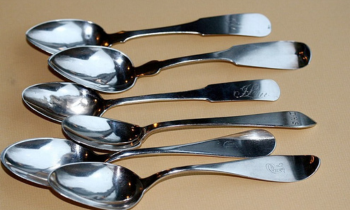
It is likely that students will respond that the metal spoon feels ‘cold’, ‘cool’ or ‘colder than the wooden spoon’ when they first touch it. This use of everyday language to refer to temperature is valid at this year level.
When left at an ambient temperature, and then measured, the temperature of wooden and metal spoons would actually be very similar. However, when touched the metal spoon will feel colder. This is because metal is a better conductor of energy than wood, so when you touch metal, heat energy is drawn away from your body immediately, causing the metal to feel cool.
After the metal spoon has been heated it will feel much hotter than the wooden spoon, but in reality their temperatures will still be quite similar. Again, this is because the metal spoon is conducting the heat energy more effectively, meaning it will be felt more easily.
It is not necessary for students to understand these ideas fully here, but they can begin to think about why the wooden and metal spoons feel like they are different temperatures, when in fact they are similar. They will have an opportunity to explore this later in the lesson.
It is likely that students will respond that the metal spoon feels ‘cold’, ‘cool’ or ‘colder than the wooden spoon’ when they first touch it. This use of everyday language to refer to temperature is valid at this year level.
When left at an ambient temperature, and then measured, the temperature of wooden and metal spoons would actually be very similar. However, when touched the metal spoon will feel colder. This is because metal is a better conductor of energy than wood, so when you touch metal, heat energy is drawn away from your body immediately, causing the metal to feel cool.
After the metal spoon has been heated it will feel much hotter than the wooden spoon, but in reality their temperatures will still be quite similar. Again, this is because the metal spoon is conducting the heat energy more effectively, meaning it will be felt more easily.
It is not necessary for students to understand these ideas fully here, but they can begin to think about why the wooden and metal spoons feel like they are different temperatures, when in fact they are similar. They will have an opportunity to explore this later in the lesson.
PROE
PROE (Predict/Reason/Observe/Explain) is a tool to engage students in the investigative process and support deep thinking.
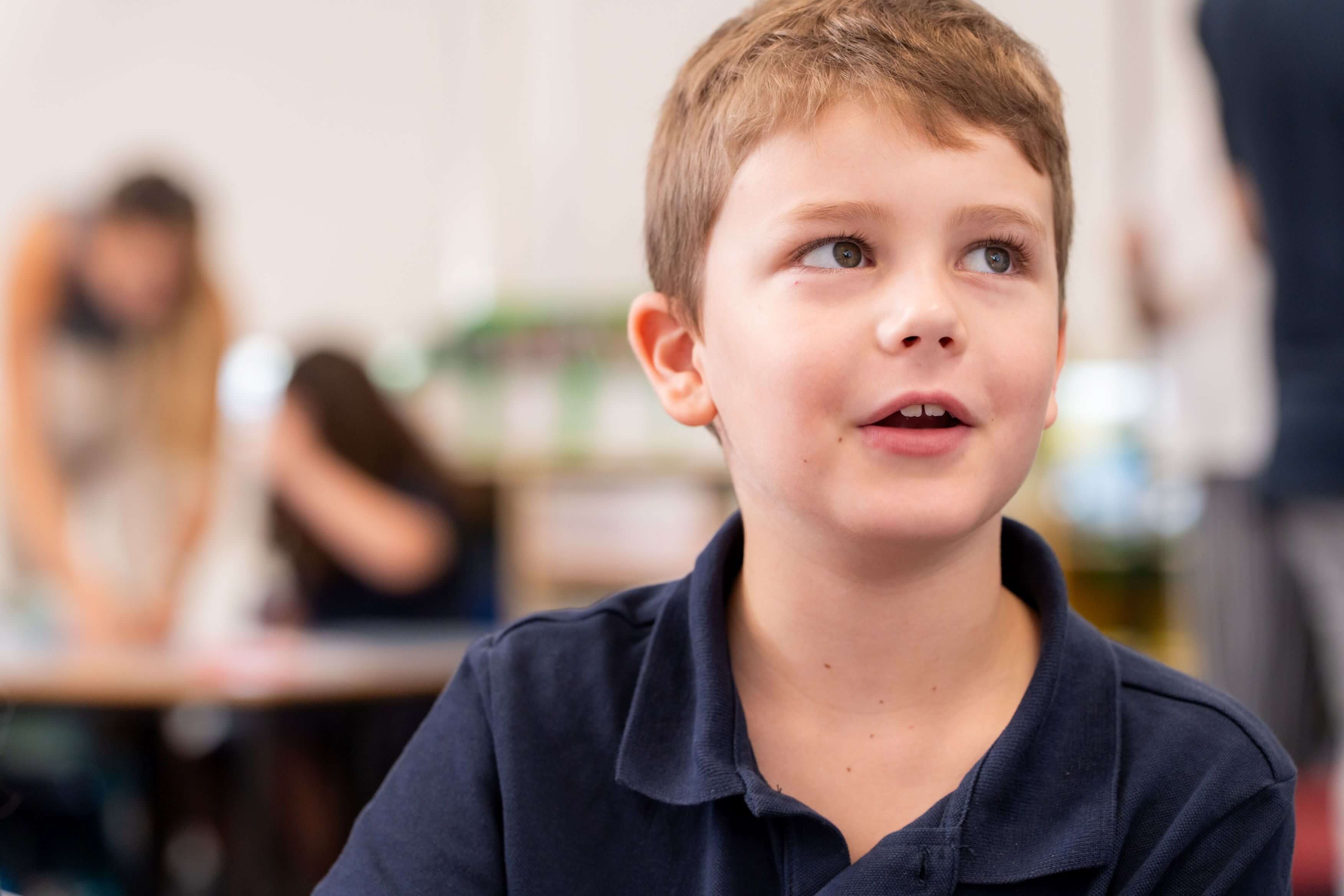
PROE is a tool to engage students in the investigative process and support deep thinking. It affords students experience with developing argumentation skills through science inquiry, and supports you, the teacher, to monitor their thinking in order to guide the inquiry.
PROE is a tool to engage students in the investigative process and support deep thinking. It affords students experience with developing argumentation skills through science inquiry, and supports you, the teacher, to monitor their thinking in order to guide the inquiry.
The Inquire phase allows students to cycle progressively and with increasing complexity through the key science ideas related to the core concepts. Each Inquire cycle is divided into three teaching and learning routines that allow students to systematically build their knowledge and skills in science and incorporate this into their current understanding of the world.
When designing a teaching sequence, it is important to consider the knowledge and skills that students will need in the final Act phase. Consider what the students already know and identify the steps that need to be taken to reach the level required. How could you facilitate students’ understanding at each step? What investigations could be designed to build the skills at each step?
Read more about using the LIA FrameworkFollowing an investigation, the Integrate routine provides time and space for data to be evaluated and insights to be synthesized. It reveals new insights, consolidates and refines representations, generalises context and broadens students’ perspectives. It allows student thinking to become visible and opens formative feedback opportunities. It may also lead to further questions being asked, allowing the Inquire phase to start again.
When designing a teaching sequence, consider the diagnostic assessment that was undertaken during the Launch phase. Consider if alternative conceptions could be used as a jumping off point to discussions. How could students represent their learning in a way that would support formative feedback opportunities? Could small summative assessment occur at different stages in the teaching sequence?
Read more about using the LIA FrameworkRepresenting the movement of heat
Create a whole-class labelled diagram showing a spoon on the heat source in the class science journal. Include arrows to show the heat going from the source (base of arrow) to the spoon (arrowhead). Remind students of the diagrams they created in the previous lesson, and how arrows are used to show the direction of heat transfer.
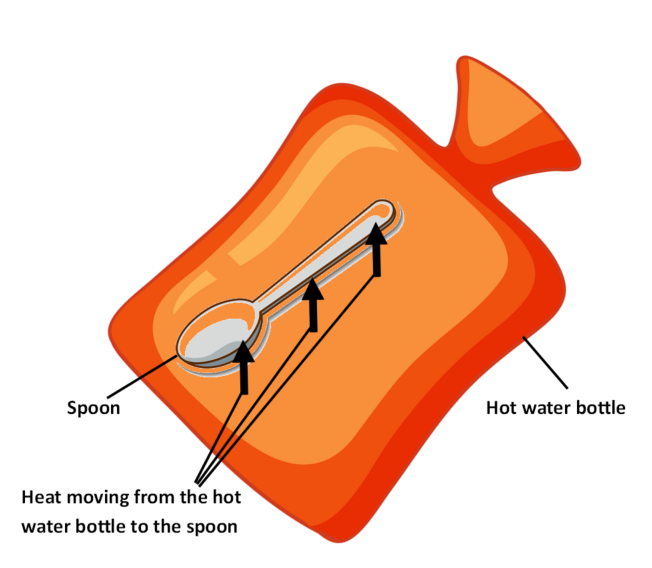
Alternatively, have students create their own labelled diagrams in their science journals.
Discuss the initial temperature of the metal spoon, and if/why students thought it felt ‘cold’ compared to the wooden spoon. Discuss where they think the heat is moving to and from when they hold something made out of metal, and how they would use arrows in a diagram if they were to represent that.
- What did the temperature of the metal spoon feel like before we warmed it up?
- Why do you think it felt cold?
- If you kept holding the metal spoon, what would happen?
- Where is the heat coming from in that situation?
- What would that look like as a diagram? Where would the arrows be pointing?
The Inquire phase allows students to cycle progressively and with increasing complexity through the key science ideas related to the core concepts. Each Inquire cycle is divided into three teaching and learning routines that allow students to systematically build their knowledge and skills in science and incorporate this into their current understanding of the world.
When designing a teaching sequence, it is important to consider the knowledge and skills that students will need in the final Act phase. Consider what the students already know and identify the steps that need to be taken to reach the level required. How could you facilitate students’ understanding at each step? What investigations could be designed to build the skills at each step?
Read more about using the LIA FrameworkThe Investigate routine provides students with an opportunity to explore the key ideas of science, to plan and conduct an investigation, and to gather and record data. The investigations are designed to systematically develop content knowledge and skills through increasingly complex processes of structured inquiry, guided inquiry and open inquiry approaches. Students are encouraged to process data to identify trends and patterns and link them to the real-world context of the teaching sequence.
When designing a teaching sequence, consider the diagnostic assessment (Launch phase) that identified the alternative conceptions that students held. Are there activities that challenge these ideas and provide openings for discussion? What content knowledge and skills do students need to be able to complete the final (Act phase) task? How could you systematically build these through the investigation routines? Are there opportunities to build students’ understanding and skills in the science inquiry processes through the successive investigations?
Read more about using the LIA FrameworkOther ways of heating
Students work in collaborative teams to investigate three other ways they might heat metal and wooden spoons. Brainstorm other potential ways of heating the spoons with students, for example: putting it out in the sun, holding it next to a heater, putting it in warm water, putting it on hot sand, holding it over a candle, blowing it with a hairdryer, or putting it close to your skin for body heat.
You might consider having a metal and wooden spoon set aside in the classroom to use as ‘control’ spoons for comparison. Discuss why having a control might be helpful.
Teams will place their spoons in their chosen locations for two minutes, before using their senses to determine if they think each spoon is now warm or hot.
HIGH TECH: Use a digital/radar thermometer to measure the temperature of the spoon before and after.
Model how to accurately use the timing device.
Form teams and allow students time to complete the activity.
Using the Spoon temperature investigation Resource sheet, students record their thinking before, during and after the investigation using the Predict, Reason, Observe, Explain (PROE) strategy. Students might include diagrams as part of their observations.
Investigating
This is an informal, exploratory fair-test investigation where students practise the skills of science inquiry.

This is an informal, exploratory fair-test investigation where students practise the skills of science inquiry. In this instance students practise accurately measuring an allotted timeframe. They can also discuss the accuracy of measuring the temperature of the spoon according to the scale of 'warm', 'hot' and 'very hot'.
This is an informal, exploratory fair-test investigation where students practise the skills of science inquiry. In this instance students practise accurately measuring an allotted timeframe. They can also discuss the accuracy of measuring the temperature of the spoon according to the scale of 'warm', 'hot' and 'very hot'.
The Inquire phase allows students to cycle progressively and with increasing complexity through the key science ideas related to the core concepts. Each Inquire cycle is divided into three teaching and learning routines that allow students to systematically build their knowledge and skills in science and incorporate this into their current understanding of the world.
When designing a teaching sequence, it is important to consider the knowledge and skills that students will need in the final Act phase. Consider what the students already know and identify the steps that need to be taken to reach the level required. How could you facilitate students’ understanding at each step? What investigations could be designed to build the skills at each step?
Read more about using the LIA FrameworkFollowing an investigation, the Integrate routine provides time and space for data to be evaluated and insights to be synthesized. It reveals new insights, consolidates and refines representations, generalises context and broadens students’ perspectives. It allows student thinking to become visible and opens formative feedback opportunities. It may also lead to further questions being asked, allowing the Inquire phase to start again.
When designing a teaching sequence, consider the diagnostic assessment that was undertaken during the Launch phase. Consider if alternative conceptions could be used as a jumping off point to discussions. How could students represent their learning in a way that would support formative feedback opportunities? Could small summative assessment occur at different stages in the teaching sequence?
Read more about using the LIA FrameworkHeat claims
Teams present their findings.
- Which heat source warmed the spoons the most? Why do you think it did so?
- Did the spoon need to touch the heat source? Why do you think that?
- In the example of putting the spoon in the sun, students might think that the spoons were not in contact with the heat source because they were ‘not touching the sun’. However, through questioning, try to draw out the idea that the spoons were in fact ‘touching’ the air and ground surface warmed by the sun, as well as absorbing the sun’s rays—therefore ‘touching’ them as well.
- How does the heat move to the spoons?
- What do you think would happen to the temperature of the spoons if we left it in contact with the heat source for longer than two minutes? Is this the same for every heat source?
- For example, discuss what would happen to ‘hot’ water over time, and if it would continue to heat the spoon, as opposed to the spoon being put in the sun, or warmed with a hairdryer continuously.
- What might happen to the temperature of the spoons if we put them in the fridge? The freezer? Wrapped them in a blanket?
- How did you know that the temperature of the spoon changed?
- Will the spoon get hotter than the source? Why or why not?
- Will the spoon stay hot? Why/why not?
- What will happen to the heat?
- How did you decide the temperature of the spoon?
- Do you think the way we measured the temperature of the spoon was accurate? Why/why not?
- How might we make this as accurate as possible?
- How do we accurately measure changes in temperature?
The audience is encouraged to agree or disagree with the findings, or to question the presenting team using science question starters.
Students add a labelled/annotated diagram to their Explain section of their PROE charts, using arrows to show the movement of heat between the heat source and the object that was heated.
Reflect on the lesson
You might:
- review the list of questions in the class science journal. Determine which questions have been answered during the session and add any new questions that have arisen.
- reflect on how this learning will be relevant to the design of the playground/piece of equipment.
- How do most objects get warm?
- They come into contact with a heat source—something warmer than them.
- Given what happened to the metal spoon, what is likely to happen to metal objects in a playground on a warm day? And what about wooden objects, given what happened to the wooden spoon?
- Will the metal objects stay hot? Why/why not?
- Will the wooden objects stay hot? Why/why not?
- What will happen to the heat?
- What does this do to the environment/air temperature of the playground?
- How do most objects get warm?
- add to the class word wall.
- re-examine and consider if/how the intended learning goals were achieved.
- discuss how students were thinking and working like scientists during the lesson. Focus on how they asked questions about how to heat a metal/ wooden spoons, made predictions, and then tested these predictions to find answers.
- discuss the importance of sharing and debating evidence.
Examining student work samples
These work samples show the progression of students’ understanding over the course of the lesson/sequence.
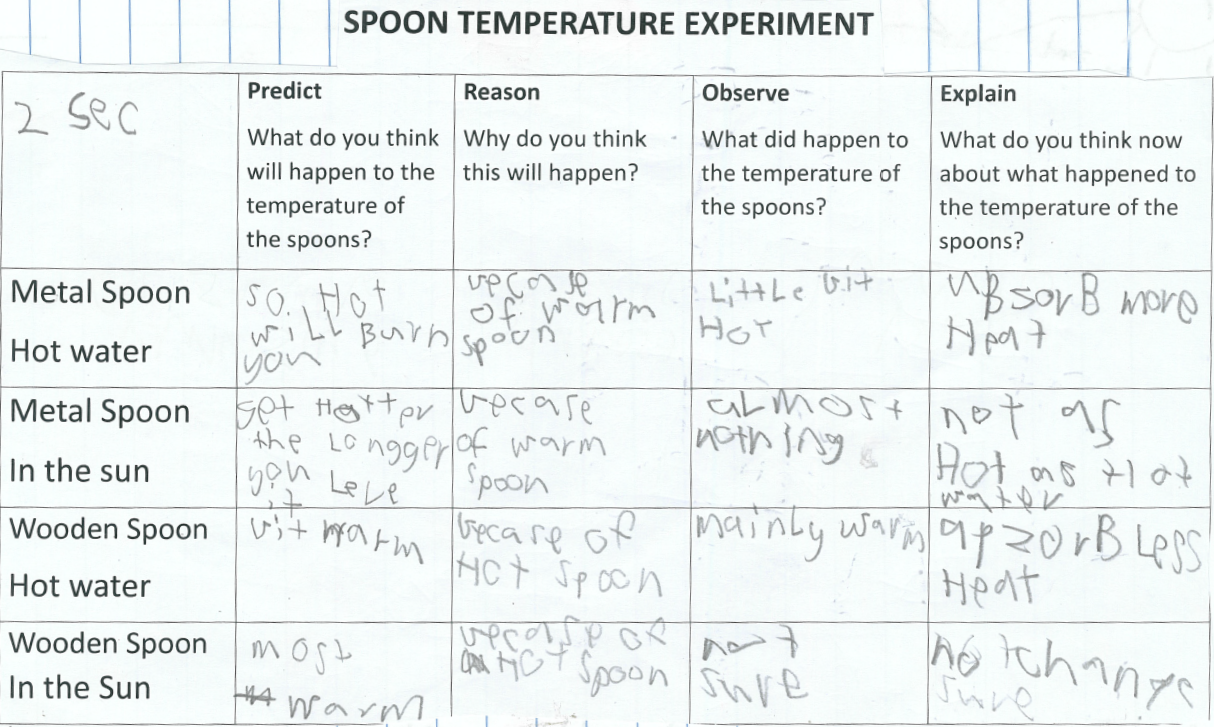
Work sample one—spoon temperature experiment
In the spoon temperature experiment, students use a provided scaffold and the PROE strategy to be prompted to make reasoned predictions based on past experiences and observations. The temperature of the spoon is then ‘measured’ comparatively and described in terms of how hot it is compared to the other spoons heated by a different method (“not as hot as hot water”). The data and information are organised using the provided scaffold to identify relationships related to heat transfer. Class discussion allows students to compare their findings to those of others and to explain how they kept their investigation fair.
To further develop this student’s skills and understanding, follow up tasks could involve:
- designing their own data table to record observations and taking measurements of temperatures using formal tools such as infrared thermometers.
- considering the proximity of the heat sources.
- considering why the hot water seemed to make a more noticeable difference to the temperature of the spoons than the sun.
Work sample two—representation
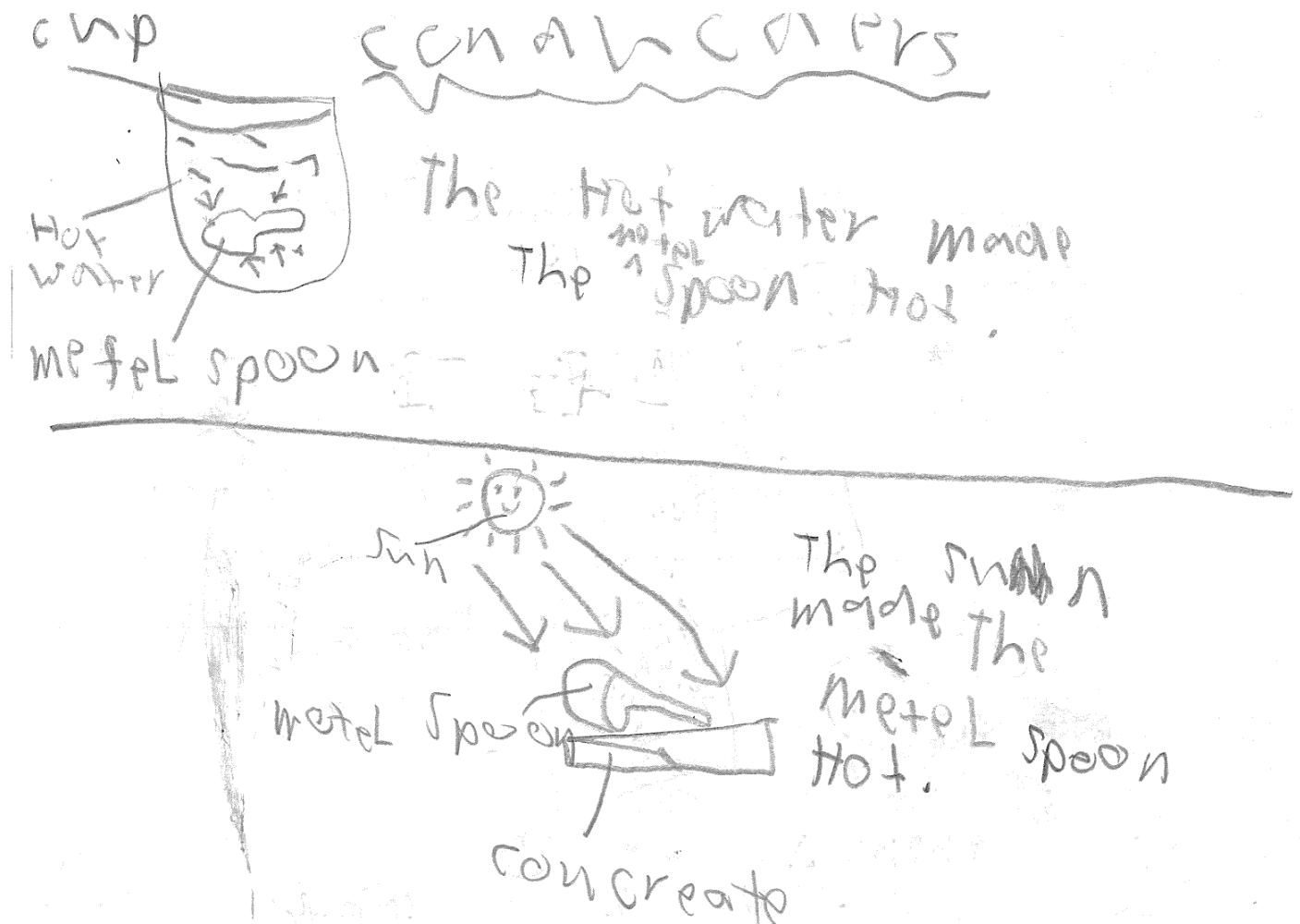
This work sample shows that this student understands that heat is transferred from the heat source to a cooler object. The arrows illustrate the transfer direction of heat energy from the hot water and the sun into the metal spoon.
Work sample three—culmination of learning
In this final work sample, the student has shown an understanding that metals are a good conductor of heat energy. They describe the metal items becoming hot quickly, and that the items will also lose that heat more quickly than other materials. This generalisation has then been used to make decisions about the best materials to use when designing a playground, and steps that may mitigate the transfer of heat over time.
Work sample one—spoon temperature experiment
In the spoon temperature experiment, students use a provided scaffold and the PROE strategy to be prompted to make reasoned predictions based on past experiences and observations. The temperature of the spoon is then ‘measured’ comparatively and described in terms of how hot it is compared to the other spoons heated by a different method (“not as hot as hot water”). The data and information are organised using the provided scaffold to identify relationships related to heat transfer. Class discussion allows students to compare their findings to those of others and to explain how they kept their investigation fair.
To further develop this student’s skills and understanding, follow up tasks could involve:
- designing their own data table to record observations and taking measurements of temperatures using formal tools such as infrared thermometers.
- considering the proximity of the heat sources.
- considering why the hot water seemed to make a more noticeable difference to the temperature of the spoons than the sun.
Work sample two—representation

This work sample shows that this student understands that heat is transferred from the heat source to a cooler object. The arrows illustrate the transfer direction of heat energy from the hot water and the sun into the metal spoon.
Work sample three—culmination of learning
In this final work sample, the student has shown an understanding that metals are a good conductor of heat energy. They describe the metal items becoming hot quickly, and that the items will also lose that heat more quickly than other materials. This generalisation has then been used to make decisions about the best materials to use when designing a playground, and steps that may mitigate the transfer of heat over time.
Productive discussion—Building understanding and consensus
Discussions that build understanding and consensus support students to develop a more complete understanding of phenomena.
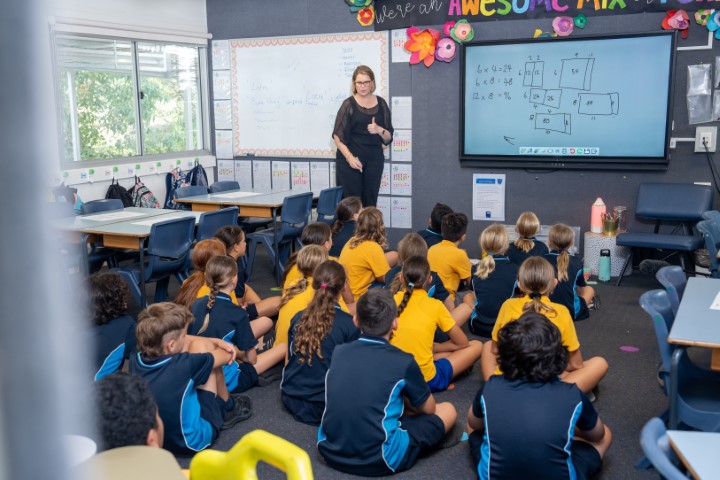
Discussions that build understanding and consensus involve students sharing, connecting, questioning, and building on their own and others’ findings, claims, evidence and reasoning. They support students to develop a more complete understanding of phenomena by encompassing learning from prior investigations as well as the one being discussed.
During these discussions teachers ask questions that have been carefully sequenced to draw out students’ claims and understanding, and support them to make connections between their experiences, integrating new knowledge into their thinking.
These probing and challenge questions are designed to support this, enabling students to begin to make claims about the transfer of heat, and to justify these claims with evidence.
The class should be encouraged to ask questions of each team to find out more about their investigation methods, conclusions and evidence.
Discussions that build understanding and consensus involve students sharing, connecting, questioning, and building on their own and others’ findings, claims, evidence and reasoning. They support students to develop a more complete understanding of phenomena by encompassing learning from prior investigations as well as the one being discussed.
During these discussions teachers ask questions that have been carefully sequenced to draw out students’ claims and understanding, and support them to make connections between their experiences, integrating new knowledge into their thinking.
These probing and challenge questions are designed to support this, enabling students to begin to make claims about the transfer of heat, and to justify these claims with evidence.
The class should be encouraged to ask questions of each team to find out more about their investigation methods, conclusions and evidence.